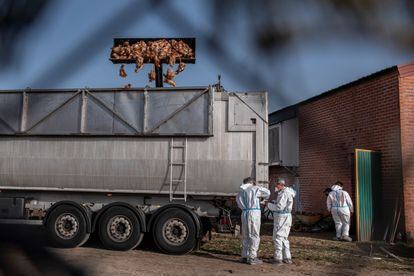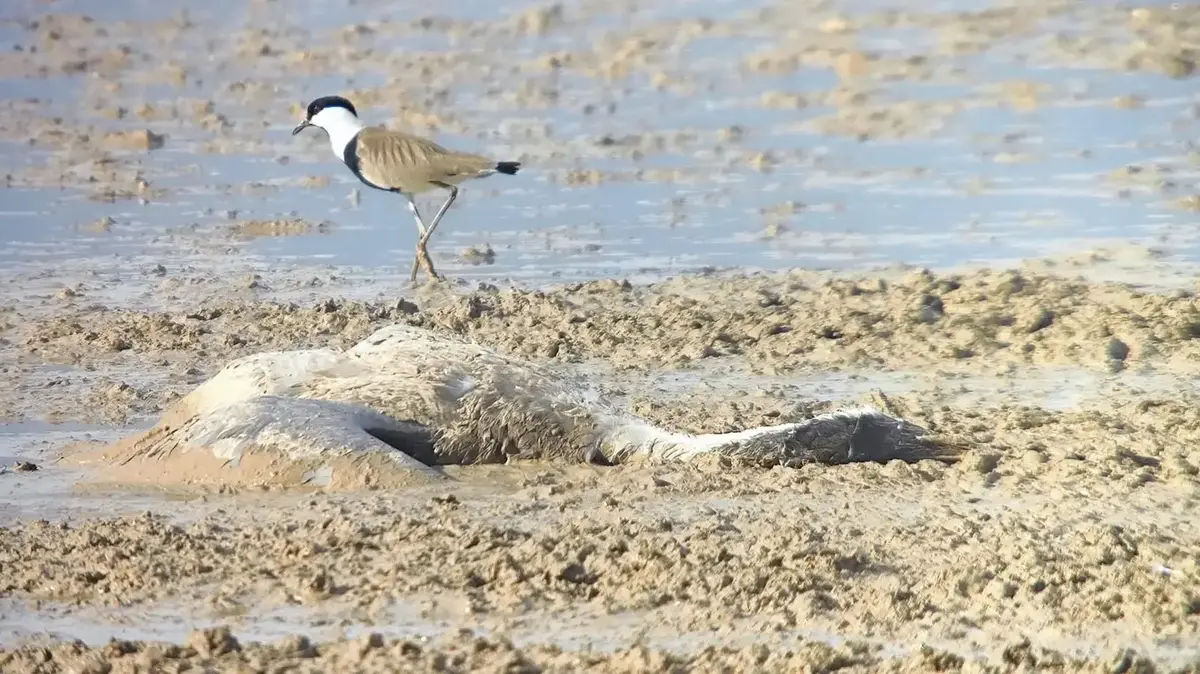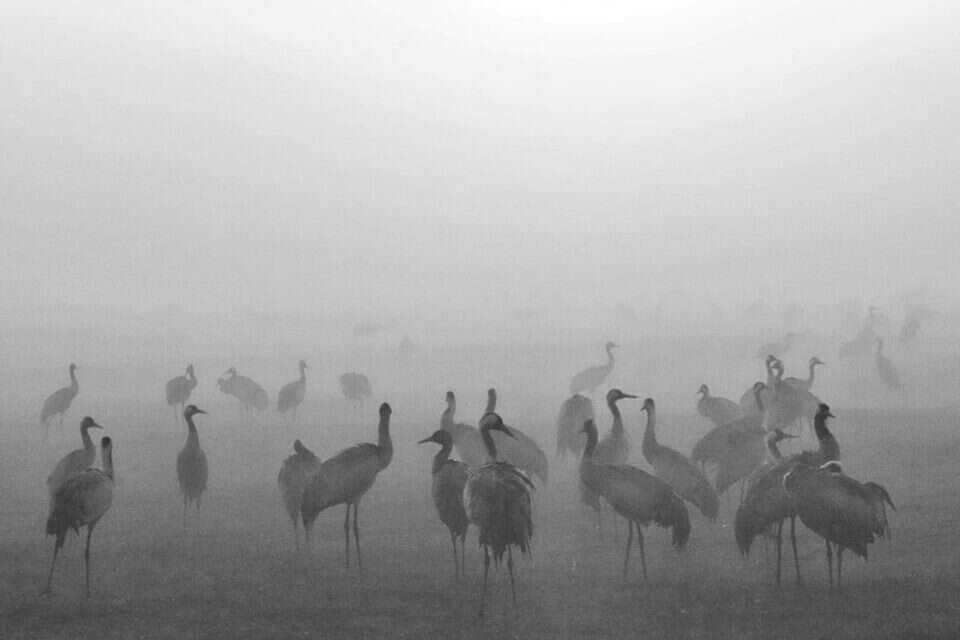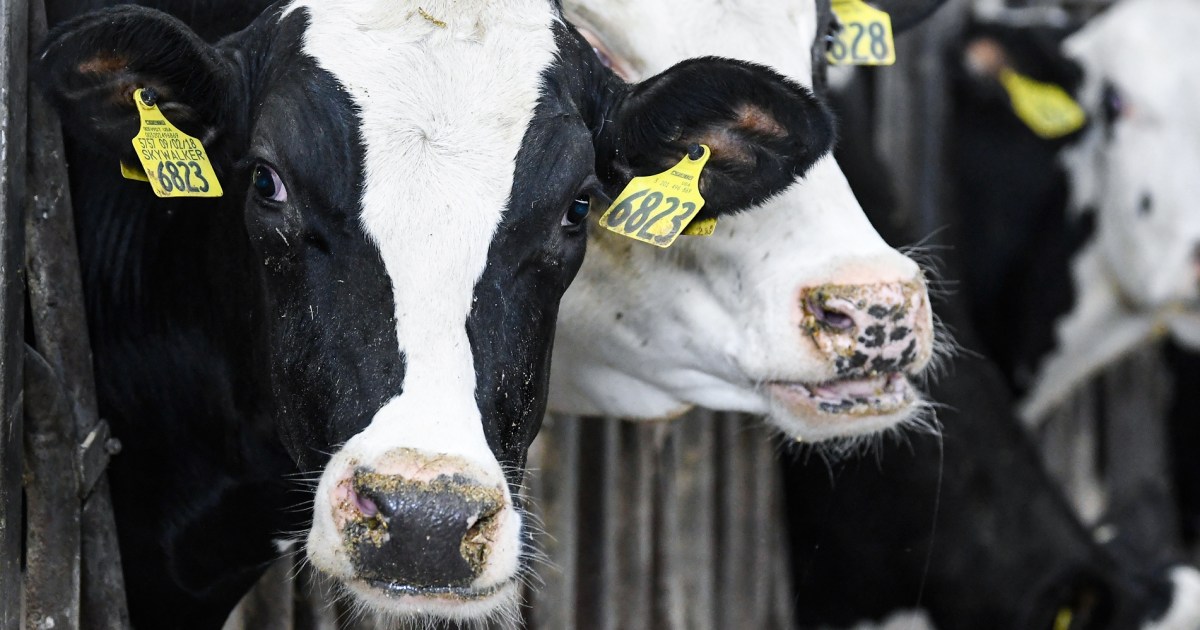Spain had been lucky so far and had avoided bird flu without major impacts while the virus decimated farms in half of Europe in recent years.
But the flu has sneaked into chicken and turkey farms in Castilla y León and Andalusia in the last month, and in just over four weeks it has forced the slaughter of more than 665,000 animals on 16 farms in the country.
The disease was first detected in the carcasses of wild birds and from there it made the leap to farms, both open-air and intensive ones that have the animals caged in ships.
Many experts point to the drought as a factor that could have been key in the expansion of the flu in Spain, since the lack of rain increases the concentration of wild birds, carriers of the virus, in wetlands.
This year's outbreak is the most serious that has been recorded so far in Spain and there are still about two months left before this seasonal disease, which has the sector on alert, can begin to fade.
The health and livestock authorities insist that the risk for man of contagion of the current variant -H5N1- is low, but a monitoring program of the Ministry of Agriculture and Health is active for the control of farm workers affected so far.
"Currently, the risk of transmission to humans is very low," says the professor of the Department of Animal Health at the Complutense University, Esperanza Gómez-Lucía.
"But we must not lower our guard and we must exercise constant vigilance, not only because of the risk of transmission to humans, but also because of the huge economic losses that it implies," she warns.
The Ministry of Agriculture recommends "minimizing unnecessary contact with birds that show clinical symptoms or are found dead in the field."
"In any case, this virus cannot be transmitted to man through cooked poultry meat, eggs or processed products derived from them," adds the ministry in its avian influenza monitoring reports.
So far, the disease has been detected in turkey and chicken farms in eight municipalities in Seville, Huelva, Valladolid and Segovia.
In the Sevillian town of Carmona alone, more than 292,000 chickens and turkeys have had to be slaughtered on four farms.
In Íscar, in two macro-farms, more than 163,000 laying hens have been slaughtered.
In addition, this year the presence of the virus has been confirmed in 17 wild birds in nine provinces.
Removal of the carcasses of the thousands of chickens slaughtered on a farm in Íscar (Valladolid) due to an outbreak of avian flu in February. Greenpeace/Pedro Armestre (Greenpeace/EFE)
The first sign of the arrival of the disease on a farm is the increase in bird mortality.
Ursula Höfle, professor at the University of Castilla-La Mancha and a veterinary expert in wild bird diseases, indicates that the outbreaks that are now occurring on farms are "explosive and very virulent" and "leave many from one day to another" deaths.
Once the disease is detected and the Central Veterinary Laboratory of Algete (Madrid) confirms that it is avian influenza, drastic measures have to be applied on the farms to prevent the spread, such as the slaughter of all the animals and the destruction of carcasses, feed and remains in which the virus may be present.
migratory birds
There is consensus among experts that the main route of spread of the virus is migratory birds.
And Spain is a migratory corridor between Africa and northern Europe.
“This generates a lot of environmental wealth”, explains Professor Gómez-Lucía.
But it can also increase the risk of bird flu transmission, for example, in periods of poor rainfall.
"Drought can be an important factor, since migratory birds look for wetlands to rest in, and since these are dry, they access farms and other places where there may be domestic birds more intensely," says this expert from the Complutense University.
Höfle adds: “Because there are fewer water surfaces, more individuals are concentrated in those that remain and transmission increases.
This process is called aggregation.
Along the same lines, Kateri Bertrán, a researcher at IRTA-CReSA (Animal Health Research Center of the Autonomous University of Barcelona), recalls that the birds that transmit the virus are aquatic, that live mainly in wetlands, and “if there are lack of water produces a greater concentration in a smaller piece of land and that makes them more easily infected”.
More contagious and lethal
Wild waterfowl (ducks, geese, seagulls...) are reservoirs of the influenza virus, although there are also bridging species such as sparrows and starlings that can transmit it.
When a wild bird comes into contact with a domestic bird, for example, in a chicken farm, contagion occurs, which can be asymptomatic or mild.
"But if these viruses are allowed to circulate through the farms, as they have a great capacity to mutate, they can become highly pathogenic and can kill up to 100% of the animals on the farm in 24 or 48 hours," explains Bertrán, from IRTA-CReSA.
The situation changed when, at the end of the 1990s, a group of highly pathogenic viruses (the ability to spread and cause symptoms) originated in China and, for the first time, were capable of infecting wild birds and maintaining their populations.
It no longer needs to reach farms to mutate and increase its virulence.
"Now we have a highly pathogenic germ circulating directly, it is in the environment and the farms no longer have that time to react before it became highly dangerous," Bertrán points out.
This group of viruses reached the United States and Europe in 2014. Two years later, in the 2016 and 2017 season, it caused the largest outbreak that the European continent has suffered to date and "since then it has been here every winter," adds the scientist.
Spain had managed to get around the virus so far without many casualties.
But since the first case was detected in a turkey farm in Fuenterrebollo (Segovia) in mid-January, the situation has changed and farms are on alert, although the outlook is far from being as serious as in the south of France, where sacrifices are already counted by millions and the farms affected by hundreds.
Jorge Orueta, from the SEO/BirdLife Conservation area, adds that, in addition to the impacts on farms, the problem it poses for wild birds must also be taken into account, among which mortality can also increase.
One of the advantages of Spain is that the animal health alert systems are “very efficient”, but, despite this, “when the virus enters a farm because it jumps the barriers, animals from the same line are found genetics and is a fertile ground for contagion.
The NGO maintains that "it is necessary to rethink the way of producing food" and asks people who find a bird in the field, especially aquatic, in poor condition, not to touch it and to call the authorities to collect it.
You can follow CLIMA Y MEDIO AMBIENTE on
and
, or sign up here to receive
our weekly newsletter
Exclusive content for subscribers
read without limits
subscribe
I'm already a subscriber


/cloudfront-eu-central-1.images.arcpublishing.com/prisa/GLQIPWOC3VBT3BKZRNAZOQJEQU.jpg)






